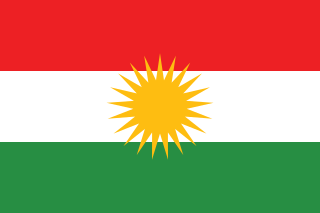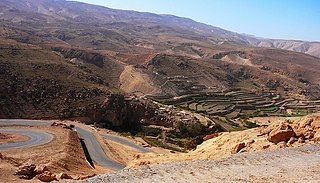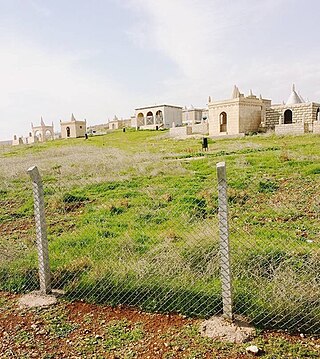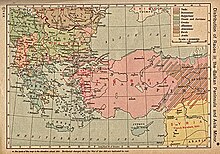
Kurdish people or Kurds are an Iranic ethnic group native to the mountainous region of Kurdistan in Western Asia, which spans southeastern Turkey, northwestern Iran, northern Iraq, and northern Syria. There are exclaves of Kurds in Central Anatolia, Khorasan, and the Caucasus, as well as significant Kurdish diaspora communities in the cities of western Turkey and Western Europe. The Kurdish population is estimated to be between 30 and 45 million.

The Kurds are an Iranian ethnic group in the Middle East. They have historically inhabited the mountainous areas to the south of Lake Van and Lake Urmia, a geographical area collectively referred to as Kurdistan. Most Kurds speak Northern Kurdish Kurmanji Kurdish (Kurmanji) and Central Kurdish (Sorani).

Bedir Khan Beg was the last Kurdish Mîr and mütesellim of the Emirate of Botan.

Kurmanji, also termed Northern Kurdish, is the northernmost of the Kurdish languages, spoken predominantly in southeast Turkey, northwest and northeast Iran, northern Iraq, northern Syria and the Caucasus and Khorasan regions. It is the most widely spoken form of Kurdish.

Turkish Kurdistan or Northern Kurdistan is the southeastern part of Turkey where Kurds form the predominant ethnic group. The Kurdish Institute of Paris estimates that there are 20 million Kurds living in Turkey, the majority of them in the southeast.

Yazidis in Armenia are Yazidis who live in Armenia, where they form the largest ethnic minority. Yazidis settled in the territory of modern-day Armenia mainly in the 19th and early 20th centuries, fleeing religious persecution by the Ottoman Empire. While Yazidis were counted as Kurds in censuses for much of the Soviet period, they are currently recognized as a separate ethnic group in Armenia. According to the 2011 census, around 35,000 Yazidis live in Armenia.
Kurdish nationalist uprisings have periodically occurred in Turkey, beginning with the Turkish War of Independence and the consequent transition from the Ottoman Empire to the modern Turkish state and continuing to the present day with the current PKK–Turkey conflict.

Kurdish nationalism is a nationalist political movement which asserts that Kurds are a nation and espouses the creation of an independent Kurdistan from Iran, Iraq, Syria, and Turkey.

Scholars have suggested different theories for the origin of the name Kurd. Recent scholarship suggests it comes from the Middle Persian word for "nomad", or may ultimately be derived from a toponym or tribal name, such as the Cyrtii or from Corduene.

Yazidis, also spelled Yezidis, are a Kurdish-speaking endogamous religious group who are indigenous to Kurdistan, a geographical region in Western Asia that includes parts of Iraq, Syria, Turkey and Iran. The majority of Yazidis remaining in the Middle East today live in Iraq, primarily in the governorates of Nineveh and Duhok.

The Sinjar Mountains, are a 100-kilometre-long (62 mi) mountain range that runs east to west, rising above the surrounding alluvial steppe plains in northwestern Iraq to an elevation of 1,463 meters (4,800 ft). The highest segment of these mountains, about 75 km (47 mi) long, lies in the Nineveh Governorate. The western and lower segment of these mountains lies in Syria and is about 25 km (16 mi) long. The city of Sinjar is just south of the range. These mountains are regarded as sacred by the Yazidis.
The Hamidiye regiments were well-armed, irregular, mainly Sunni Kurdish but also Turkish, Circassian, Turkmen, Yörük, and Arab cavalry formations that operated in the south eastern provinces of the Ottoman Empire. Established by and named after Sultan Abdul Hamid II in 1891, they were intended to be modeled after the Cossacks and were supposedly tasked to patrol the Russo-Ottoman frontier. However, the Hamidiye were more often used by the Ottoman authorities to harass and assault Armenians living in Eastern Provinces of the Ottoman Empire.

The main religions that exist or historically existed in Kurdistan are as follows: Sunni Islam, Shia Islam, Christianity, Zoroastrianism, Yarsanism, Yazidism, Alevism and Judaism. Overall today, Sunni Islam is the most adhered to religion in Kurdistan.

Yazidism in Turkey refers to adherents of Yazidism from Turkey, who remained in Turkey after the dissolution of the Ottoman Empire. The Yazidis living in Turkey during and after the second half of the 20th century gradually left for European countries. In the 1980s, there were 60,000 Yazidis situated in Beşiri, Kurtalan, Bismil, Midyat, Idil, Cizre, Nusaybin, Viranşehir, Suruç and Bozova. Today, these places are almost empty due to exodus to Europe which was provoked by political, religious and economic difficulties. Today only small number remain in villages around Midyat, Viranşehir, Çınar and Beşiri. According to the census of 2000, only 423 individuals adhering to Yazidism remained in the country.

The Ezidkhan Command for Liberating Sinjar, known as the Sinjar Alliance, is a joint command of two - initially three - Yazidi militias, the Sinjar Resistance Units (YBŞ), and the Êzîdxan Women's Units (YJÊ). Both of the remaining two militias are supported by the Kurdistan Workers' Party (PKK).
The deportations of Kurds by Turkey refers to the population transfer of hundreds of thousands of Kurds from Turkish Kurdistan that was perpetuated by the Ottoman Empire and its successor Turkey in order to Turkify the region. Most of the Kurds who were deported were forced to leave their autochthonous lands, but the deportations also included the forced sedentarization of Kurdish tribes. Turkish historian İsmail Beşikçi emphasized the influence of fascism on these policies, and Italian historian Giulio Sappeli argued: "The ideals of Kemal Atatürk meant that war against the Kurds was always seen as an historical mission aimed at affirming the superiority of being Turkish." Occurring just after the Armenian genocide, many Kurds believed that they would share the same fate as the Armenians. Historians Dominik J. Schaller and Jürgen Zimmerer state that this event "not only serves as a reminder of the unsettling fact that victims could become perpetrators, but also that perpetrators [as some Kurds were during the Armenian Genocide] could turn victims".

Secession in Turkey is a phenomenon caused by the desire of a number of minorities living in Turkey to secede and form independent national states.

The persecution of Yazidis has been ongoing since at least the 12th century. Yazidis are an endogamous and mostly Kurmanji-speaking minority, indigenous to Kurdistan. The Yazidi religion is regarded as "devil-worship" by Muslims and Islamists. Yazidis have been persecuted by the surrounding Muslims since the medieval ages, most notably by Safavids, Ottomans, neighbouring Muslim Arab and Kurdish tribes and principalities. After the 2014 Sinjar massacre of thousands of Yazidis by ISIL, which started the ethnic, cultural, and religious genocide of the Yazidis in Iraq, Yazidis still face discrimination from the Iraqi government and the Kurdistan Regional Government.
Alphabetical index of articles about the Yazidis, and their history and culture.

Ottoman Kurds were ethnic Kurds who lived in the Ottoman Empire. At its peak, the Ottoman Empire ruled Turkish Kurdistan, Iraqi Kurdistan, Syrian Kurdistan, and a small part of Iranian Kurdistan.
















